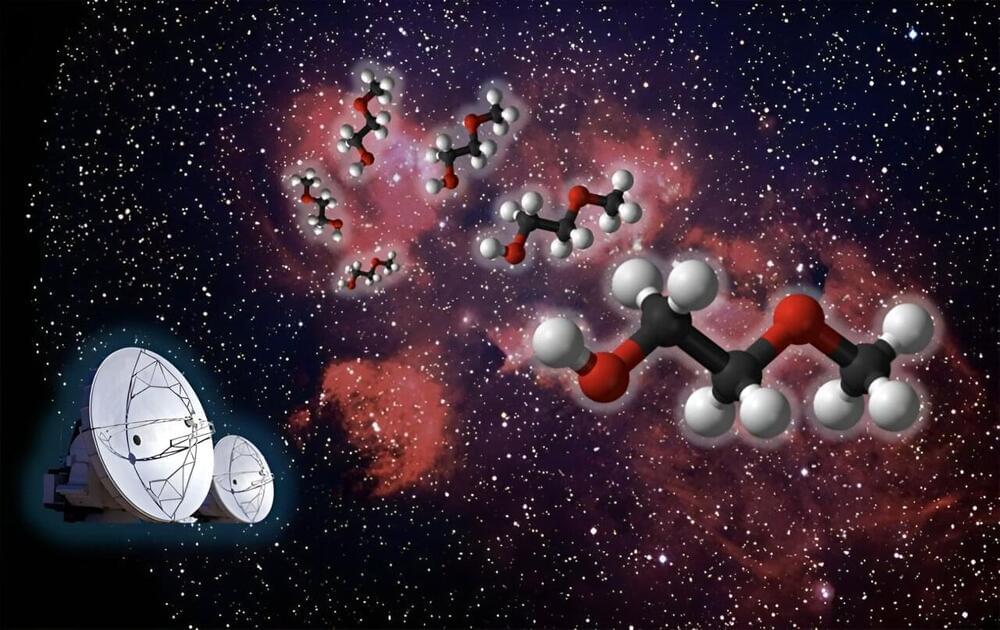The molecule 2-methoxyethanol could reveal how the cosmos grew so complex.



A team of chemical engineers from Université PSL, CNRS, Harvard University and chemical company Calyxia, has discovered a way to prevent or delay coalescence in some immiscible liquids.
In their paper published in the journal Science, the group describes how experiments they conducted led to the discovery of a way to get some fluids such as water and oil, to remain as an emulsion for long periods of time without the use of surfactants.
It is widely known that when two immiscible liquids, such as water and oil are mixed, they do not remain so for very long—they slowly separate into two layers. This is because they never really mix to begin with; instead, they coexist as droplets that coalesce when they come into contact with one another.

Xaira has recruited a group of researchers who developed the leading models for protein and antibody design while in Baker’s lab. The company aims advance these models and develop new methods that can “connect the world of biological targets and engineered molecules to the human experience of disease.”
“Driven by growing data sets and new methods, there has been accelerating progress in artificial intelligence and its applications to medicine, biology and chemistry, including seminal work from David Baker’s lab at the Institute for Protein Design,” said Foresight’s Dr Vikram Bajaj. “In starting Xaira, we have brought together incredible multidisciplinary talent and capabilities at the right time to reimagine our entire approach, from drug discovery to clinical development.”
Boasting proficiency in handling vast and multidimensional datasets, Xaira claims it will enable comprehensive characterization of disease biology at various levels, from molecular to clinical. Drawing from Illumina’s functional genomics R&D effort and integrating a key proteomics group from Interline Therapeutics, the company aims to gain new insights into disease mechanisms.

New research from the group of MIT Professor Brett McGuire has revealed the presence of a previously unknown molecule in space. The team’s open-access paper, “Rotational Spectrum and First Interstellar Detection of 2-Methoxyethanol Using ALMA Observations of NGC 6334I,” was published in the April 12 issue of The Astrophysical Journal Letters.
Zachary T.P. Fried, a graduate student in the McGuire group and the lead author of the publication, worked to assemble a puzzle comprised of pieces collected from across the globe, extending beyond MIT to France, Florida, Virginia, and Copenhagen, to achieve this exciting discovery.
“Our group tries to understand what molecules are present in regions of space where stars and solar systems will eventually take shape,” explains Fried. “This allows us to piece together how chemistry evolves alongside the process of star and planet formation. We do this by looking at the rotational spectra of molecules, the unique patterns of light they give off as they tumble end-over-end in space.


A team at Texas A&M University is taking significant steps for the development of a new generation of energy storage devices. They aim to develop a device that can combine the benefits of current technologies while addressing their limitations.
Dr. Abdoulaye Djire, a chemical engineering professor at Texas A&M University, as well as a few chemistry engineering graduates are focusing on MXenes, which is expected to be a compelling alternative to conventional lithium-ion batteries. Currently, the team is exploring the major advantages of nitride MXenes.


Venki Ramakrishnan’s is the real-deal ‘pivot story’ — ‘pivoting’ being quite the fancy thing to do today. Born in Chidambaram in Tamil Nadu in 1952, Venki wanted to be a physicist, and by the time he decided to do something about his passion for Biology, he was already a PhD in Physics from Ohio University, USA. He then ‘pivoted’ and studied Biology at the University of California, San Diego, before he began his post-doctoral work at Yale University.
He went on to win the Nobel Prize in Chemistry in 2009 for his work on cellular particles called ribosomes. His first book, Gene Machine, captures this journey with the kind of honesty and self-deprecation one does not expect from an award-winning scientist.
With similar candour, in his second book, he examines recent scientific breakthroughs in longevity and ageing and raises uncomfortable questions about the ethical aspects of the research as well as the biological purpose of death.


Manganese complexes have long been utilized by nature to catalyze the oxygen evolution reaction (OER) but mirroring their efficiency in artificial electrochemical systems has proven difficult. This study centers on alpha-manganese dioxide (α-MnO2), which closely mimics natural MnIV-O-MnIII-HxO motifs, presenting a novel method for manipulating proton coupling within the OER process using an external electric field.